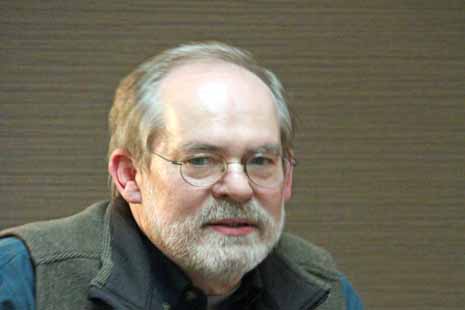By Mitch Wolgamott
The permit for the Lost Valley Ranch mega-dairy, issued by the Oregon Department of Environment Quality, my former employer, and the Oregon Department of Agriculture will make a 30-year-old pollution problem even worse.
The dairy would be Oregon’s second largest dairy, eventually housing 30,000 cows near Boardman.
Not long before I left DEQ in 2010, I was asked to attend the annual Farm Fair in Hermiston. I was specially asked to address “the regulatory environment” related to the Lower Umatilla Basin groundwater management area.
The management area had been established in 1990 because of serious nitrate pollution. Twenty years had passed with no improvement. The early years were spent studying the problem and working with stakeholders to develop an action plan — a plan that was agreed to by everyone, including large-scale, irrigated agriculture.
As was customary, agricultural sources were asked to voluntarily implement practices that would improve water quality. But there was a stipulation that if things did not improve, regulatory solutions could be sought. Progress was to be evaluated every four years.
At the Farm Fair I told the audience that not only had there been no improvement, after 12 years the problem was actually getting worse.
The groundwater was becoming more polluted, and little progress in reducing nitrogen pollution by irrigated agriculture was documented. I stated that if the next progress report looked like the last one, DEQ would have to begin looking at regulations to improve water quality.
Even as acting administrator for DEQ’s eastern region, I knew I would need backing from higher up if any regulation was necessary. So I told the chain up the line at DEQ what I was going to say and got agreement on it. Later we arranged an information item for the Environmental Quality Commission to brief them on the situation.
At the EQC meeting Phil Richerson, the most knowledgeable person in the state regarding the local water quality, briefed the Commission on the status of efforts and on the water trend analysis for the management area: The pollution was getting worse.
I supported the position that no action was needed by the EQC at that time. But I said we would be back after the next progress report was finalized and may need to be talk about developing a more accountable approach to improving water quality. I left the DEQ assuming there would be follow-through by the department. Apparently that has not happened.
Other players in the groundwater management area had already spent millions of dollars on water quality improvements in the basin. The citizens of Pendleton, Hermiston and other cities have spent millions on upgrades to treatment plants, the food processors (ConAG, Simplot, et.al.) had spent millions upgrading their wastewater systems, Soil and Water Conservation districts had done education and outreach.
Only big, industrial agriculture could not document progress.
About 80 percent of the nitrogen loading in the basin is coming from big irrigated agriculture. These irrigators are not what comes to mind when most people think of farming. If you’ve seen it from the air, you know these are industrial operations — just as mega-dairies are industrial scale and need to be regulated as any other industry.
What’s worse is that these mega-dairies are also industrial scale irrigators. The Hidden Valley farm will add up to 5,000 acres of large scale irrigation and fertilization. By issuing this permit, adding more irrigation over groundwater that is already polluted, the DEQ and ODA almost guarantee that the pollution will continue to get worse. The permit will result in a significant increase in what is already the biggest contributor to the problem — industrial scale irrigation (we are not talking about your grandparents’ farm here).
It’s clear that the only way to solve the Lower Umatilla Basin groundwater pollution is to decrease the amount of nitrogen and irrigation that is reaching the groundwater from industrial scale irrigation.
After nearly 30 years of increasing pollution, a new management plan is woefully needed. To be successful that plan must bring the irrigators to the table and get documentable and, yes, enforceable commitments to reducing nitrogen application per acre by industrial scale irrigators.
The nuclear option: Groups that are continuing to fight the Lost Valley mega-dairy are right to do so. The problem cannot be solved while allowing large increases in nutrient application at the present rates. It’s time to halt increases in industrial agriculture until the existing pollution problem is solved.
I remember an analogous situation in Western Oregon back in the late 1970s or 1980s. In Washington County there was serious surface water pollution. After years of struggle the agencies were unable to make progress in solving the problem. Progress was stalled by the fact that the competing cities were not working together but staying in their silos. Finally, as a last resort, the Environmental Quality Commission imposed a growth moratorium on Washington County. Practically overnight everyone came to the table and worked out plans to address the problems, the moratorium was lifted, and progress continues to be made in protecting water quality while the economy booms.
Perhaps it is time that the EQC consider such a move here. As a last resort, consider a prohibition on any further increase in large-scale irrigation/fertilization within the GWMA until there is an aggressive, and enforceable, plan to improve the groundwater quality. It’s been almost 30 years now and the problem is only getting worse.
Mitch Wolgamott is a member of Oregon Rural Action and former acting administrator of the Department of Environmental Quality’s Eastern Region. The East Oregonian published a version of this commentary on June 9, 2017.

